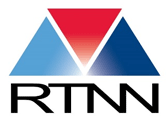Researchers at NC State have developed a technique that uses nanoparticles, nanospheres and nanorods, to trigger shape changes in polymers. These differently shaped nanoparticles exhibit different surface plasmon resonances and will heat when exposed to specific wavelengths of light. When embedded in polymers, this causes the material to heat and change its shape. This work has the potential for use in soft robotics applications like biomedical implants. For more on this work, please see the NC State press release.
Authors: Sumeet R. Mishra and Joseph B. Tracy, North Carolina State University
Published: June 15, Applied Nano Materials
DOI: 10.1021/acsanm.8b00394
Abstract: Photothermal triggering of shape-memory polymers is an appealing noncontact mode of actuation for responsive materials and soft robotics. Wavelength-selective photothermal triggering of shape recovery is reported in thermoplastic polyurethane shape-memory polymers with embedded gold (Au) nanospheres and nanorods. Light-emitting diodes with wavelengths of 530 and 860 nm matched to the surface plasmon resonances drive selective shape recovery. Wavelength-selective shape recovery enables sequential actuation, as demonstrated in a wavelength-controlled stage with optically controlled height and tilt angle using legs of shape-memory-polymer films with embedded Au nanospheres and nanorods.


